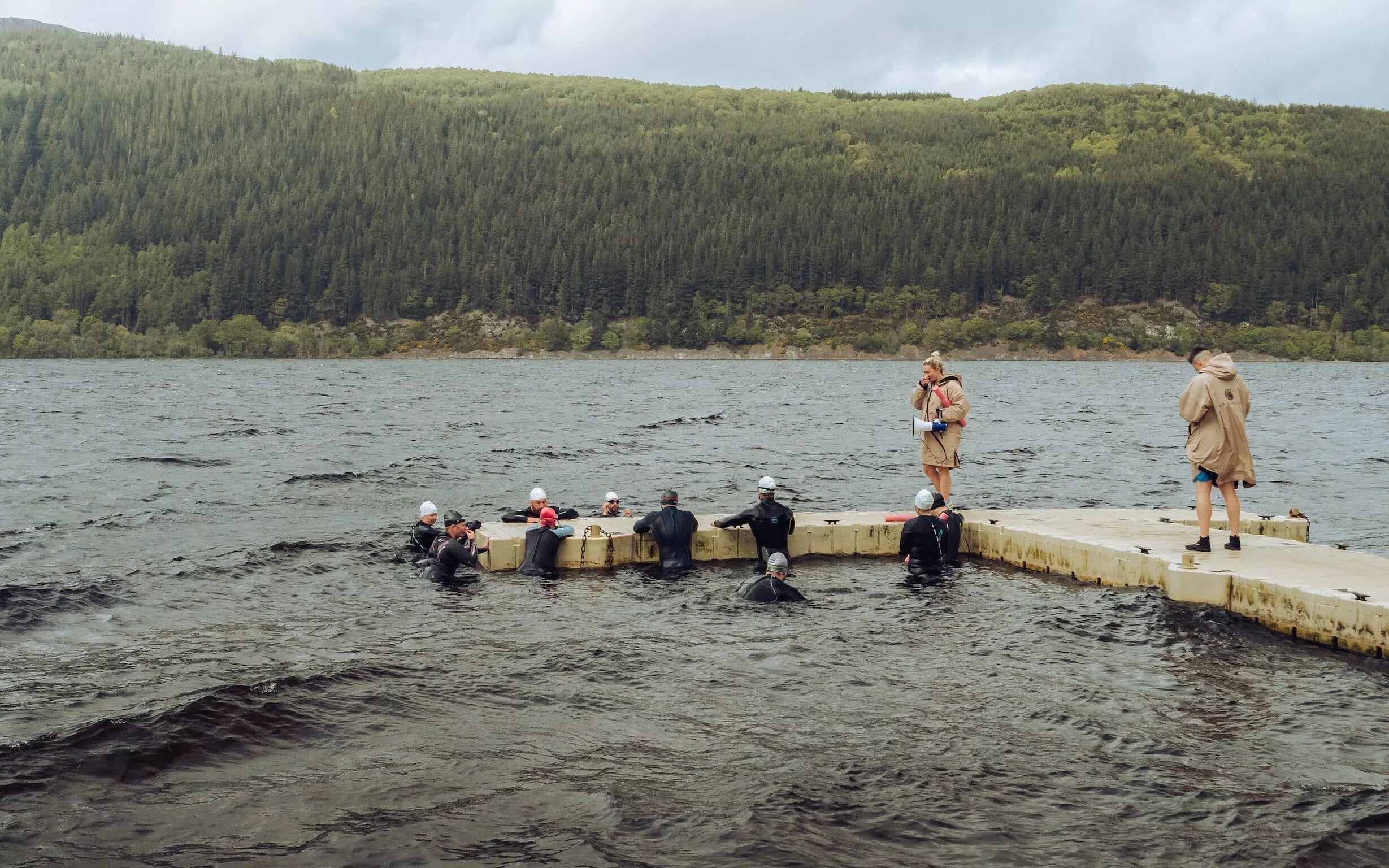Welcome to our Seashell blog posts where we dive into the stories of the Seashell people. We hope to use this space and platform to inspire others and to start important conversations.
Today we are looking at how to progress from indoor swimming to outdoor swimming.
Here are some simple tips to help you.
So let's dive straight in.
Why go from indoors to outdoors?
Swimming is an excellent exercise that provides a great workout for the entire body. While swimming in a pool is a popular form of exercise, open water swimming provides an exciting and challenging alternative. Open water swimming is done in a natural body of water, such as a lake or the ocean, and requires a different set of skills than pool swimming. In this blog, we will discuss how to progress from swimming in the swimming pool to open water swimming.
Physical Health Benefits.
Open water swimming is a great way to improve both physical and mental health. Physically, open water swimming provides an excellent full-body workout that can improve cardiovascular health, increase muscle strength, and burn calories. Swimming in open water requires more energy and engages more muscle groups than swimming in a pool due to the presence of waves, currents, and wind. The resistance provided by the water can also help improve muscle tone and increase endurance.
Mental Health Benefits.
Open water swimming also has significant mental health benefits. It can reduce stress and anxiety, improve mood, and promote overall well-being. Swimming in nature can have a calming effect on the mind, providing an opportunity to disconnect from the stresses of daily life and connect with nature. The rhythmic nature of swimming can also have a meditative effect, helping to clear the mind and reduce stress.
To add to this, open water swimming can provide a sense of accomplishment and boost self-esteem. Setting goals and achieving them, such as swimming a certain distance or completing a race, can improve confidence and provide a sense of satisfaction. Being outdoors and exploring new bodies of water can also provide a sense of adventure and excitement, adding to the overall positive experience of open water swimming.
1. Improve your technique.
Before venturing into open water, it's essential to work on your technique in the pool. Developing good technique will make you a stronger and more efficient swimmer, which will translate to better performance in open water. Focus on your body position, breathing, and stroke technique. Try to swim with a long, smooth stroke, and work on maintaining a consistent pace.
Having someone look at your stroke could help you enormously. Often it only requires a few small adjustments to massively improve your stroke which in turn should make you more confident regardless of where you swim. You can then also practice outdoor specific techniques and tips with the guidance of a coach and what to do if you get out of your comfort zone and need to get to safety.
2. Start in a controlled environment.
When you're ready to venture into open water, it's best to start in a controlled environment. Look for a lake or beach with a lifeguard on duty, and swim in a designated swimming area. This will give you the opportunity to get used to the different conditions and practice sighting and navigation in a safe environment. You can even head there before you plan to go in. A week or a few days in advance. Scope the place out and take in your surroundings. Know that when you are in the water, what you can see will change. Best tip if you are new to an area is to find an easy entry and exit point. If you are cold it can be a lot harder to try get out so make sure you know where you are going when that happens.
3. Acclimatise to the water temperature
Open water can be much colder than a swimming pool, so it's essential to acclimatise to the water temperature before diving in. Start by splashing water on your face and body, and gradually work your way up to submerging your entire body in the water. Spend a few minutes in the water to get used to the temperature before starting your swim.
You can even practice by going into a cold water barrel in a more controlled environment and build it up so you get a little more used to the cold water.
Know that it is usually the first couple of minutes that are the hardest but once you get moving (swimming), you should warm up. This is dependant on the time of year. Even in the summer it can feel cold to begin with. Trust that you will get warmer. It is the same when you head out for a run. You often start cold and then warm up.
4. Practice sighting and navigation
One of the biggest challenges of open water swimming is navigating and staying on course. In a swimming pool, the lane lines guide you, but in open water, you need to rely on sight and navigation skills. Practice sighting by lifting your head every few strokes to see where you're going. You can also practice swimming in a straight line by using a buoy or other marker as a guide.
A reminder not to use boats as markers to look at. It would seem obvious as they are there in the water still but someone could easily start it and suddenly the boat is gone. Make sure to pick something that is going to stay still. If you are ever stuck then try putting a bright jacket or towel down on a rock somewhere you can see. Just make sure it wont blow away!
5. Wear the right gear
Open water swimming requires different gear than pool swimming. Invest in a wetsuit that properly fits you, swim cap, and goggles designed for open water swimming. A wetsuit will keep you warm and provide extra buoyancy where it needs to depending on what type of swimmer you are, while a swim cap will keep your head warm and visible in the water. Goggles designed for open water swimming have a wider field of vision and are more durable than pool goggles. A tow float so that you can be seen by others in the water swimming or those on the water in boats etc. The float is more for safety but also great to hold on for a little but if you do get tired. Lots of cosy clothes for afterwards! You may not always have the luxury of a warm shower to heat up in. Take lots of clothes, hot water bottle and flasks for example. Prepare for the cold.
6. Swim with a partner
It's always a good idea to swim with a partner when swimming in open water. Not only is it more enjoyable to share the experience, but it's also safer. If you get tired or experience a cramp or other issue, your partner can assist you. Even better if you can take some of your swimming friends from indoors as well. You can all enjoy this new experience together!


In conclusion.
In conclusion, transitioning from swimming in a pool to open water swimming can be a rewarding and a challenging experience in many different ways.
Open water swimming is a fantastic way to improve both physical and mental health. It provides a challenging yet rewarding workout that engages both the body and mind. The benefits of open water swimming are numerous, and it's a great way to stay active and enjoy the great outdoors.
So get out there and enjoy it!
The ultimate guide to unlocking the full potential of one of nature's most powerful resources.
Cold water has been used for centuries as a natural remedy to promote health, vitality, and well-being, and its benefits are backed by science.
Whether you're a seasoned cold water enthusiast or just starting out, this comprehensive guide will provide you with all the information you need to harness the power of cold water and take your health and wellness to the next level.






Why is Wild Swimming becoming so popular?
Dip a Day April 2023 - Why you should be joining the challenge this year.